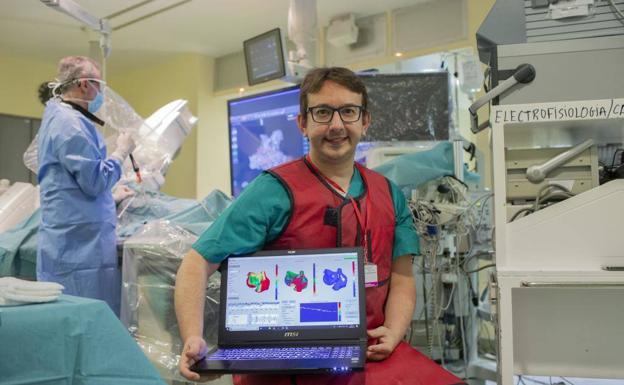Every time a report is published on the level of innovation in European countries, Spain appears as the student who receives the report card and a “needs to improve” is reflected. Last November, the European Union published the “European Innovation Scoreboard” (EIS for its acronym in English) and Spain is a “moderately innovative” country.
However, the latest EIT Awards 2020 granted by the European Institute of Innovation and Technology, the center in charge of promoting excellence in higher education, research and innovation within the European Union, has made it clear that Spain innovates.
“Spain was one of the countries with the most representation among the finalists in the EIT Awards”, explains to this newspaper Andreu Climent, Ramón y Cajal researcher at the ITACA Institute of the Polytechnic University of Valencia and founder of Corify.
Indeed, one of those finalists and ultimately the winner of the EIT Award 2020 is Climent himself with his medical project Corify. “In Spain we are innovators”, he points out as soon as he receives the recognition of the European institute.
“It is true that we are not a country where there are many facilities, among other things because all this requires many resources and it is difficult to get them,” he points out.
His latest work started ten years ago in a study between the Polytechnic University of Valencia and the Gregorio Marañón Hospital in Madrid. Now, Corify Care, as the startup born from this research is called, gives a new impetus to its journey.
“Many resources are required, because in the end the research phase, being complex and expensive, is almost the cheapest of all,” says Climent. One of its funders is the EIT itself, which now adds 50,000 euros more with the award, “We have managed with private capital to start part of the development, although we need more funds,” he details.
The work of Climent and the entire Corify Care team focuses on curbing cardiac arrhythmias.
This pathology affects more than 10 million people in Europe and statistics indicate that one in three adults will suffer an arrhythmia throughout our lives. “In Spain there are about a million people who suffer from chronic cardiac arrhythmia,” says the recent winner of the EIT Award 2020.
A figure that may be small, but in which “our health system spends more than a billion euros a year just on hospitalizations and maintenance of people with a pathology that, on top of that, dividing their life expectancy by two”, he adds.
The main problem is that for more than half of the patients there is no effective treatment. Patients transition between drugs, defibrillations, and multiple invasive interventions, and in approximately 50% of cases without success.
There are a large number of cardiac mapping systems on the market, but the vast majority are invasive and require introducing catheters into the heart before knowing if the treatment will be effective.
The work of a decade of the team led by the Spanish researcher is reflected in a technology that only by recording 128 electrocardiogram signals and with a 3D reconstruction of a patient’s camera, «is capable of reconstructing the volume inside the patient as if we could see the heart and see what is happening within it, “he detailed to this newspaper.
“We are the only company in the only company that has the patents and that has developed that technology. This allows us, for the first time, to be able to teach clinicians what is happening in the heart without inserting a catheter or without the need for surgery.
At the moment, the Corify Care device is being tested in several Spanish hospitals and is also being tested and awaiting validation at Stanford (United States).
There are a large number of cardiac mapping systems on the market, but the vast majority are invasive and require introducing catheters into the heart before knowing if the treatment will be effective.
However, the interventions are complex, expensive, not without danger, and can only be offered to a very small number of patients (3-5%), and what is worse, their long-term efficacy rarely exceeds 65%.
“I like the application of engineering within in biology and we have always been working very closely with patients,” says Climent. “When you are working in the operating room you realize how sometimes up to half of cardiac surgeries are not effective and patients have to repeat the surgery without it working.
You realize that technology is needed, that before making the decision to introduce a patient to an operating room, it can help a clinician to see if it will work.
Now, they are awaiting clinical validation in 2021, “but we need to be audited by regulatory agents.” So they do not wait for approval “until the end of 2021 or the first half of 2022,” he says.



 Bitcoin
Bitcoin  Ethereum
Ethereum  Tether
Tether  XRP
XRP  Solana
Solana  USDC
USDC  Cardano
Cardano  TRON
TRON  Lido Staked Ether
Lido Staked Ether  Avalanche
Avalanche  Toncoin
Toncoin